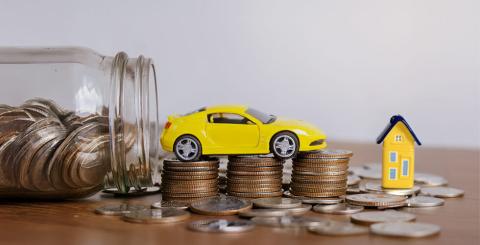What’s the annual cost of a car?

Before buying a car, it’s important to know what you can afford and find a vehicle that fits your actual budget. It’s a tough job, with all the different models and ways to buy out there. For instance: is it better to buy or lease a car? Should you buy a used car or pay extra for a new one and get the peace of mind that comes with having a warranty? Let’s look at the scenarios in detail and clear things up a bit.
The purchase
If you can afford it and you really want to get a new car, purchasing remains your best solution, not just because you’re the owner of a vehicle you can eventually sell, but because there’s no limit on how many kilometres you can drive and no dealer fees for any damage that might occur to the vehicle.
Before you sign on the dotted line though, make sure to get a good rate on the financing. Many automakers offer rates between 0 and 2%. Watch out for interest rates that are too high, especially if you’re planning to pay your vehicle off over a long period. How long should that be? Try not to go beyond 60 months (5 years) so you don’t end up owing money on your car after the manufacturer’s warranty has expired.
Try and make the biggest down payment you can afford. That cuts down your monthly payments as well as the length of time you’ll be paying.
Leasing
If your budget is tight, you really want to get a new car, and you have no interest in car ownership or in keeping a car for a long time, then leasing is the cheapest option on a monthly basis.
But remember, a vehicle you’re leasing isn’t yours. In other words, when your lease expires, you have to hand over the keys to the dealer. Still, the low monthly payments you get when you lease are pretty enticing for car buyers. For reference, leasing a car with a retail price of $25,185 will cost $316 a month (before taxes) over a 48 month period at an interest rate of 1.99%. The same vehicle would be $547 a month on a 48-month loan. So yes, there’s a substantial difference there.
Add car insurance premiums to that monthly rate—which vary depending on things like your age and driving record—and you can see why leasing is popular among new-car buyers.
Bear in mind though that there are some restrictions when you lease, such as how many kilometres you can drive per year, which are set by the dealer when you sign the contract. And if your dealer finds any aesthetic or mechanical damage when you return your vehicle, you may have to pay at least a share of the repair costs.
Used
The best deal, particularly if your priority is reducing your annual costs, is to buy a used car with no financing, as long as the vehicle you get doesn’t need a lot of repairs.
As a rule, you can generally get your hands on a good used vehicle for somewhere between $6,000 and $10,000. Before you buy a used car, you should of course check out its maintenance history and get a proper mechanical inspection to avoid any surprises. Try to find a vehicle that’s not too old, and steer well clear of vehicles with a lot of kilometres on them. Maintenance tends to be more expensive after vehicles pass the 100,000-kilometre point on the odometer, with things like timing belts, the alternator, and the water pump acting up.
Vehicles with a simpler mechanism—like a 4-cylinder engine, for example—tend to be less fussy than those with a V6, V8, or turbocharged engine. Japanese makes have had a very good reputation in that area. Look for companies with a reputation for reliability. Some automakers tend to have a reputation for better-than-average reliability, provided the vehicle has been properly maintained.
You might also consider manufacturer-certified used vehicles. They’re vehicles that the automaker has inspected and certified. They may even come with a warranty as well as financing at attractive interest rates, making them a particularly good buy.
Other costs
Buying a good vehicle only accounts for part of annual ownership costs. Before you buy, be sure to shop around and check the insurance premiums for the model that interests you. Try to avoid vehicles with big V8 engines. Not only do they use more gas, there are large-cylinder-capacity fees to pay with your registration if the displacement is over 4 litres. Watch out too for vehicles with big rims, which will make your winter tires more expensive when the snow flies. We also recommend you keep up on your preventive maintenance to avoid pricy mechanical breakdowns.
Sure, high-performance vehicles have their charms, but remember that parts for them are more expensive to maintain and that the extra muscle seems to make speeding tickets a lot easier to come by—two things that add to your annual driving costs.



